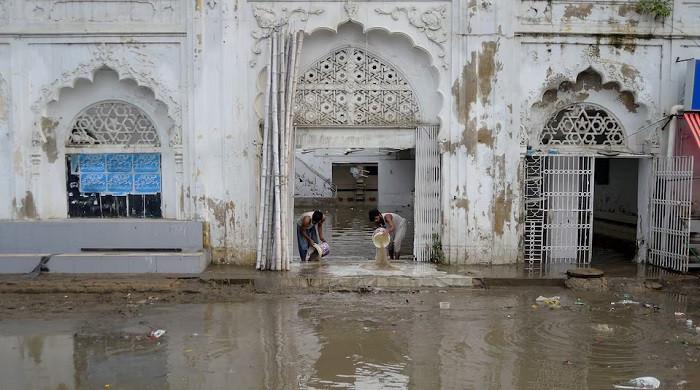- Several parts of the city remain submerged in stagnant rainwater.
- Citizens protest against a power suspension up to 48 hours.
- Around 100 feeders still closed, with ongoing restoration work.
Karachi: The Pakistan Meteorology Department (PMD) said Friday that the rain system that hit Karachi in the last three days was expected to move today, with only light showers probably in the morning.
However, it is likely that another rain spell reaches other parts of Sindh at the end of this month, according to a spokesman for the weather office.
“A new monozonic system will enter Sindh on August 27, bringing rain to Karachi and other parts of the province until August 30,” said spokesman, added that the existing system should fail today.
The rains began in Karachi on Tuesday, causing generalized floods as the rain reached levels not seen in years in some parts of the financial capital of Pakistan and the largest city, home of more than 20 million people.
The disastrous rain led 17 deaths, mainly caused by drowning, traffic accidents, building collapse and electrocution.
The downpour interrupted the power, mobile phone services and flights, authorities said.
Television images showed cars and other vehicles floating through the streets and houses submerged in water.
In Karachi, several main roads developed potholes in a matter of hours, with Jahangir Road once more similar to his former mistreated state. The water accumulated on the road from Teen Hatti to Gurumandir, decelerating the traffic to crawl.
Korangi’s roads were also closed after the increase in levels in the Malir River caused the crossing to be insecure.
The underground steps in Sohrab Goth and Dright Road remained flooded, while rainwater remained in the Airport Road and Safora’s route to Pehlwan Goth, which badly affects traffic flow.
The situation forced several private schools to announce the closures for the day. Some changed the classes online, although the SNDH government has not issued any directive for a general closure of the schools.
Power supply
The sudden downpour interrupted the electrical system of the city, and the efforts to restore supplies were hindered by the flooding and congestion of traffic, which made access difficult.
However, prolonged power cuts deepened the misery of defenseless citizens.
The residents of Block 9 of Gulistan-E-Jauhar organized protests against K-Electric on cuts that extend after 56 hours, saying that they had run out of electricity and water.
Children, women and the elderly are suffering, ”said a protester outside the public service company office, where people met with the battery to register their anger.
Energy suspensions were also reported in City Villas, Muslim Hausing Society (Scheme 38), Saddar and Jubilee Market, where residents said the supply had been reduced since Tuesday night.
K-electric, in a statement, said that electricity was being provided to 2,000 of its 2,100 feeders throughout the city.
Around 100 feeders remained closed, with the restoration work in progress, added the spokesman.
But the interruptions of 24 hours or more were reported in multiple blocks of Gulistan-E-Jauhar, as well as in the Karachi’s Judicial Income Society and the Judicial Society.
For many residents, the combination of flooded streets and extended blackouts has become a gloomy reminder of how vulnerable karachi is still a modest period of rain.
This year, almost 750 people have died since the season began, according to the authorities.
Pakistan is among the most vulnerable countries in the world with the effects of climate change and faces extreme climatic events.
The floods of the Monzón submerged a third of Pakistan in 2022, resulting in approximately 1,700 deaths.




